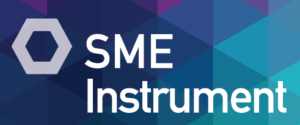How to write a SME Instrument proposal?
 The Access4SMEs ‘ analysis of more than 50 real SME instrument phase 2 winning proposals reveals that there are typical characteristics among them. They might help you to assess whether your innovation stands a chance in the high competition of the SME instrument. We’ve highlighted the typical characteristics of the winning proposals:
The Access4SMEs ‘ analysis of more than 50 real SME instrument phase 2 winning proposals reveals that there are typical characteristics among them. They might help you to assess whether your innovation stands a chance in the high competition of the SME instrument. We’ve highlighted the typical characteristics of the winning proposals:
- The company is less then 5 years old, or at least below 10 years.
- It’s a microcompany (1-9 people) or small company (10-49)
- You’re selling a scalable product, rather then a service. Products are scalable, services usually not. To offer a scalable service, you should turn your service into product, automate wisely part of your service (e.g. offer it as a software-as-a-service), or redefine your service logic through partnering.
- Approach the market through B2B business model. Less then 10% of successful SME instrument project are targeting B2C market.
- Your business has high margin per sale (at least more then 10% or usually 30-50% or higher)
- Have the solid IP protection in place or pending. In only less then 20% cases the unfair advantage is maintained through other means then IP protection, typically by an entry barrier defined by the market itself or the characteristics of the product (high development cost, trade secrets etc.).
- Your value proposition is based on technical features, saving costs, price or simplicity.
- Your offer solves a known problem from a different perspective (disruptive innovation), you have better-offer approach (incremental innovation) or you identified a new problem and satisfy a new need (market creating innovators)
- 3-year growth expectations are high, your annual turnover is expected to be at least doubled while in terms of employment, company expects to grow a bit less, typically between 20-50%.
- Your CAGR is expected to be from below 10% up to 40%, or if you target a largely untapped new demand (‘blue ocean’ market), you expect the CAGR of more than 70% share.
- Your market share expectations range from below 10% in case you operate in a fragmented market, up to 50% market share in emerging and oligopolistic markets, and to more then 50% share in case of blue ocean market.
- Your most probable market barriers are market entry costs, the need of demonstrating the product/service, high investment to reach the market quickly, reaching enough client mass to build a strong position, and regulation.
- You have already verified the existence of the demand through a direct experience in the market with potential users or based on current client needs
- You know the size of your market, based on an in-depth study and historical data or based on your current customers.
- There is a documented will to pay among your customers, demonstrated by a letter of intent. Having a letter of intent is key in successful SME instrument application (88% of all the cases had at least 1), especially coming from clients (almost 80%) or key stakeholders (60%)
- Your distribution channels are mainly so far planned but not yet secured
- SME instrument is a follow-on funding for other public funding (applies in almost 60% of the cases).
- The company already had some type of investment before entering the SME instrument (usually VC, bank debt, industrial partnerships or Business Angel).
- In most of the cases (80%), you have reached TRL 6 committing your internal resources. Only in 7% of the cases, the company business is based on acquired IP developed by a third party.
- Having a team with business and management experience is a must (either working previously in a managerial corporate business position or had a previous experience as an entrepreneur, already having started other SME(s)).
See the analysis details at access4sme.eu and read the full report.
Browse through the winning SME Instrument proposals on placed on the map here.
Do not hesitate to contact our experienced team for support when writing your SME Instrument proposals!

